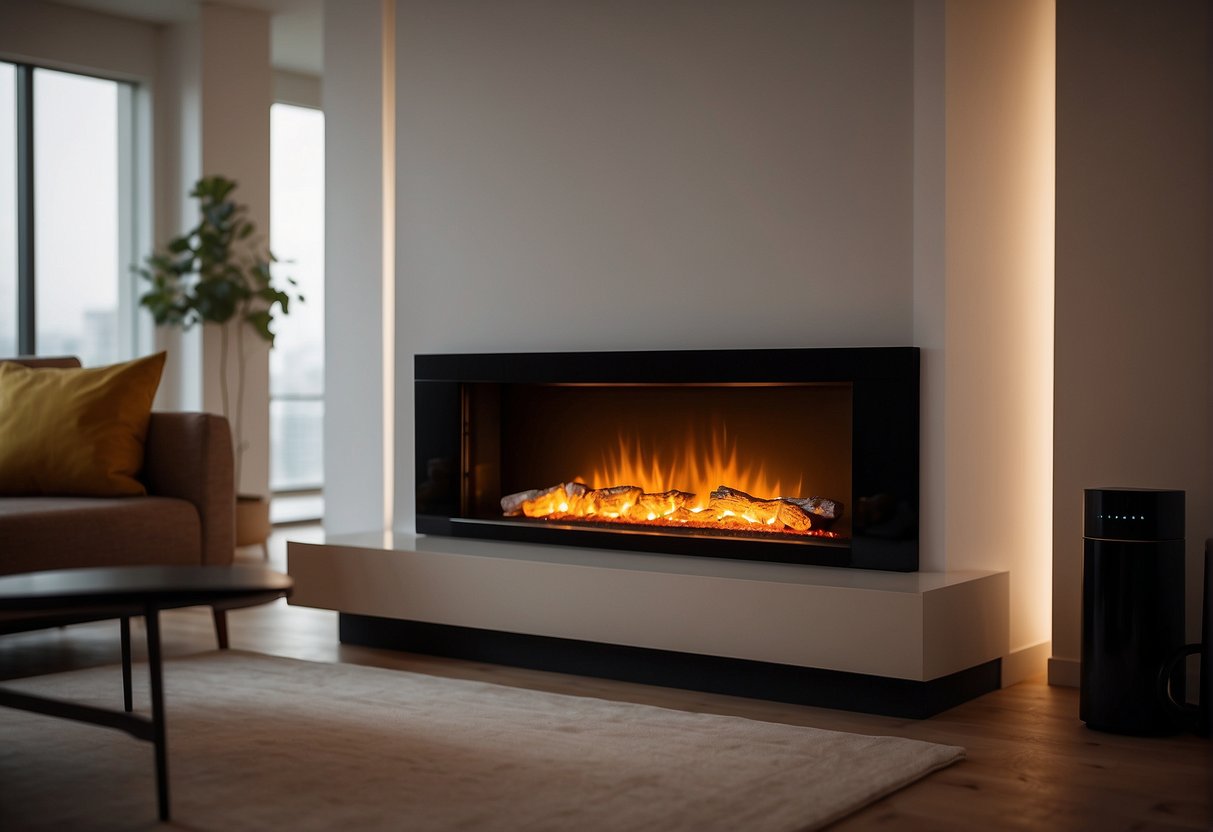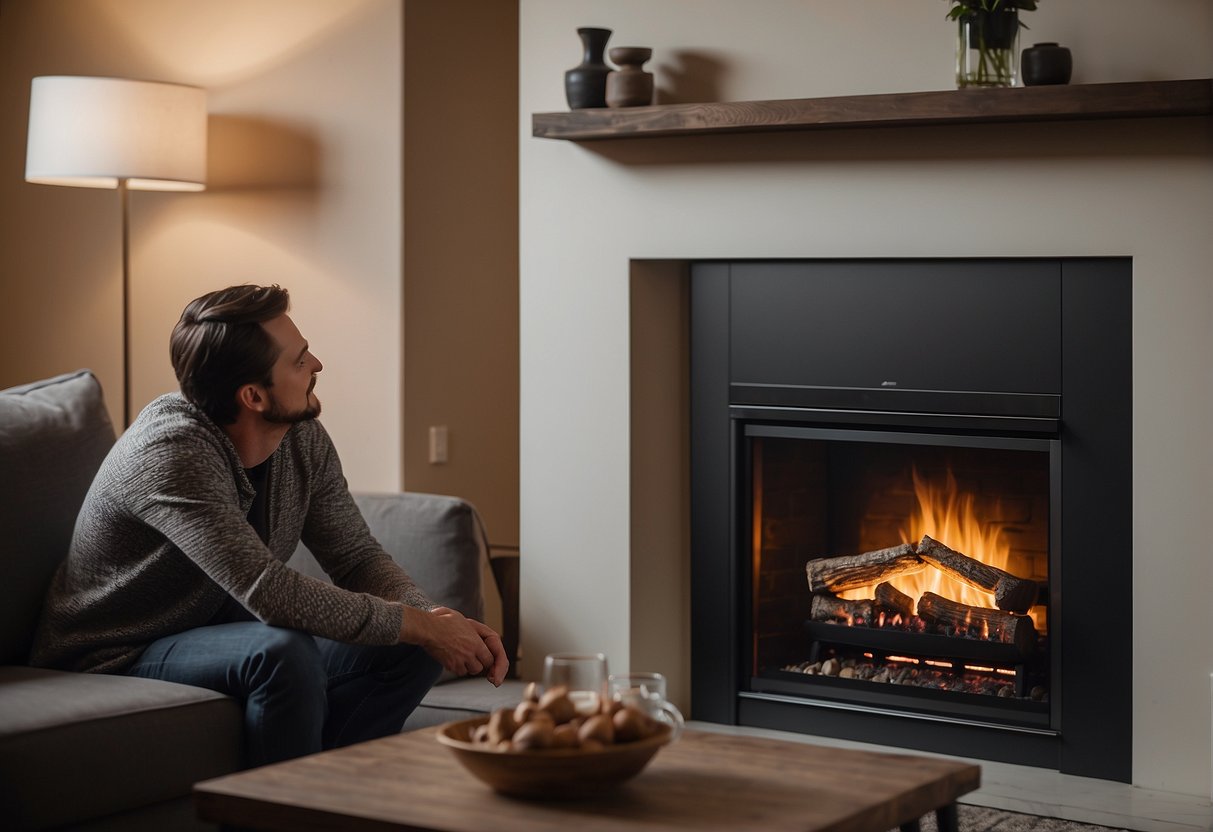Outline
-
- Introduction
- Comparing Electric and Gas Fireplaces
- Environmental Considerations and Energy Efficiency
- Technological Innovations and Features
- Consumer Considerations for Choosing Between Electric and Gas Fireplaces
- Concluding Thoughts on the Future of Fireplaces
- Frequently Asked Questions
- Conclusion: Keeping Your Chimney Safe and Efficient
Introduction
As the world progresses and technology evolves, the debate between electric and gas fireplaces continues to heat up. With advancements in electric fireplace technology, including realistic flame simulations and increased heat output, they are becoming a more popular choice for homeowners seeking both ambiance and convenience. Meanwhile, gas fireplaces have typically been favored for their longer lifespan and ability to produce more heat. However, the growing importance of energy efficiency and environmental considerations is shifting consumer preferences toward electric options.
The choice between an electric or a gas fireplace depends on several factors, including installation requirements, maintenance needs, and the desired aesthetic appeal. Electric fireplaces provide ease of installation and low maintenance, while gas fireplaces offer a traditional look with real flames. Each type of fireplace has its unique value proposition, and consumers weigh these against their personal priorities when making a choice. As electric fireplaces become more sophisticated, with improved technological features, the question arises: will they eventually take over the market currently dominated by gas fireplaces?
Key Takeaways
- Electric fireplaces are gaining popularity due to advancements in technology and consumer demand for convenience.
- Gas fireplaces traditionally offer a longer lifespan and real flame experience, influencing consumer choice.
- Energy efficiency and environmental concerns are significant factors in the growing preference for electric fireplaces.
Comparing Electric and Gas Fireplaces
When exploring the suitability for electric and gas fireplaces in a home, it is important to critically assess their costs, installation requirements, safety profiles, maintenance needs, heating efficiencies, and their impact on interior design.
Cost and Installation Differences
The initial cost of acquiring an electric fireplace can be higher than that of a gas fireplace, factoring in the price of high-end models with advanced features. However, the difference becomes more pronounced when considering installation. Gas fireplaces often require running a gas line and creating a vent, leading to potentially higher setup costs. In contrast, electric fireplaces only need an electrical outlet, and some models can be user-installed. Professional installation usually costs between $150 to $300, but additional expenses may incur for wiring installation.
Safety and Maintenance Aspects
In terms of safety, electric fireplaces eliminate risks such as carbon monoxide poisoning, soot, and gas leaks. They are considered low maintenance due to the absence of real flames which minimizes the need for regular cleaning. Gas fireplaces, while generally safe, do require more intensive maintenance and proper venting to avoid dangerous emissions.
Heating Efficiency and Energy Use
Both types of fireplaces have their merits in terms of heating efficiency and energy use. Gas fireplaces produce more heat and are more energy efficient than wood-burning alternatives, but electric fireplaces are efficient in energy conversion, though they may have a limited heat output. Operating costs for electric fireplaces can range significantly but are approximately $0.33 to $0.66 per hour based on the average electricity prices.
Design and Aesthetic Implications
Design preferences play a crucial role in choosing between an electric and gas fireplace. Those seeking a modern look may lean towards electric fireplaces, which offer a variety of flame effects and styles. Meanwhile, gas fireplaces can provide a real flame and a cozy ambiance similar to traditional wood fireplaces. The aesthetic appeal largely depends on personal taste, but both have the capacity to enhance the look and feel of a living space.
Environmental Considerations and Energy Efficiency
When evaluating the merits of electric and gas fireplaces, it’s crucial to consider environmental impact and energy efficiency. These factors not only affect the planet but also influence long-term cost-effectiveness and indoor air quality.
Eco-Friendly Heating Options
Electric fireplaces are known for producing zero direct emissions because they do not burn fuel to generate heat. This means that when they operate, electric fireplaces do not emit carbon monoxide, particulates, or other harmful emissions. In contrast, gas fireplaces burn natural gas and can release trace amounts of these emissions, albeit much less than traditional wood-burning fireplaces. They are considered clean-burning compared to wood-burning units but still have an environmental impact due to the combustion process.
Energy Efficiency and Cost-Effectiveness
Electric fireplaces boast nearly 100% energy conversion rate, turning all consumed electrical energy directly into heat, making them quite efficient in that regard. Experts say electric fireplaces may reach higher efficiency levels compared to gas counterparts, which convert about 70% to 90% of the energy they consume into heat. However, the overall cost-effectiveness can vary based on local electricity and fuel costs, and sometimes gas fireplaces might be more cost-effective to operate, depending on energy prices and usage patterns.
- Initial Cost: Electric fireplaces are usually more affordable to install than gas.
- Operational Cost: Depending on local utility costs, gas fireplaces can be cheaper to operate per unit of heat.
Ventilation and Air Quality
One of the most significant differences between electric and gas fireplaces is the need for ventilation. Electric fireplaces require no venting, thereby preserving indoor heat and avoiding the need for a complex ventilation system. Gas fireplaces typically require a vent for safe operation to eliminate the risk of indoor pollutants, such as carbon monoxide or nitrogen dioxide. Although modern gas fireplaces are designed with efficient, direct-vent systems to minimize heat loss while maintaining air quality, the presence and maintenance of these systems are still additional considerations.
Technological Innovations and Features
The electric fireplace industry is harnessing cutting-edge technology to enhance the aesthetics and utility of its products, increasingly rivaling traditional and gas fireplaces.
Advancements in Electric Fireplace Technology
In terms of technological enhancements, electric fireplaces now boast full spectrum RGB flames that utilize LED lighting and hologram imaging to mimic the natural dance of real flames. This advancement allows users to customize the flame color based on their preferences, setting the electric fireplace apart with vibrant visuals.
Convenience Features and Controls
Today’s electric fireplaces are outfitted with an array of convenience features. They often include integrated thermostat controls and come with remote control functionality, allowing users to adjust settings from a distance. Moreover, many are designed with smart technologies, connecting to mobile apps for seamless operation. These features contribute to the overall user-friendly and convenient nature of electric fireplaces compared to their flammable gas counterparts.
Size and Installation Varieties
The market is now abundant with various size options and installation possibilities for electric fireplaces. Consumers can choose from portable models that can be moved easily, wall-mounted units that provide a modern look, or built-ins that emulate the appearance of traditional fireplaces. Unlike a built-in gas fireplace, electric types do not require a flue or ventilation, simplifying installation and offering more versatility in placement within the home.
Consumer Considerations for Choosing Between Electric and Gas Fireplaces
When selecting a fireplace, homeowners must evaluate factors such as installation requirements, long-term investment, and their lifestyle needs. These considerations will guide the choice between electric and gas options.
Space Requirements and Suitability
Electric fireplaces provide flexibility for homeowners as they do not require a chimney or venting, making them suitable for apartments and smaller spaces. A freestanding electric fireplace can cost between $250 to $650. On the contrary, gas fireplaces often necessitate a built-in structure and an existing gas line, which can be ideal for larger spaces or where a traditional wood-burning aesthetic is desired. A dual-sided electric fireplace, however, can reach costs up to $6,200 for those looking for a striking design element in expansive areas.
Long-Term Value and Resale Potential
The choice between gas and electric can affect the resale value of a home. Built-in gas fireplaces are often seen as premium features that can increase a home’s value. They provide radiant heat and the ambiance of a cozy fireplace, which could be appealing to future buyers who value traditional fireplace experiences. However, electric fireplaces are an affordable and efficient alternative for supplemental heating, offering lower installation and maintenance costs. Gas fireplaces, using either natural gas or propane, could offer better long-term value despite higher upfront costs.
Lifestyle and Frequency of Use
For those who plan to use their fireplace frequently, the convenience and lower operating costs of an electric fireplace could be more appealing. These can be turned on and off with a switch and do not require the storage of wood or the purchase of propane. On the other hand, gas fireplaces, while more costly upfront and in terms of fuel, offer the tactile experience of warm air flowing from a natural flame, suited for homeowners who prioritize the aesthetic of a traditional wood-burning fireplace without the need for actual wood. The choice becomes a matter of personal preference and how often one expects to enjoy the ambiance and warmth provided by their fireplace.
Concluding Thoughts on the Future of Fireplaces
Electric fireplaces are gaining traction in modern homes, driven by their convenience and environmental advantages. They do not emit fumes or require venting, making them a safer choice for indoor air quality, compared to traditional gas fireplaces. However, while electric fireplaces are touted for their energy efficiency, one must consider the potential for electricity outages that could render them nonfunctional.
On the other hand, gas fireplaces present a mixed scenario; they offer a more authentic experience with actual flames and can operate during power blackouts. Nonetheless, they raise safety concerns with the combustion process, which necessitates proper venting to prevent carbon monoxide build-up.
In terms of costs, the initial investment for high-end electric models can be steep. Yet, they often lead to lower operating expenses as they convert all their energy directly into heat. Gas fireplaces, while having a lower initial cost, can incur higher long-term expenses due to fuel consumption.
Environmental sustainability is shaping the demand for electric fireplaces. As renewable energies become more prevalent, their environmental footprint could lessen, potentially overshadowing gas alternatives. Design flexibility is another significant proponent of electric units as they can be installed almost anywhere, free from constraints of gas lines and chimneys.
Although disadvantages exist for both types, it’s clear that technological advancements and shifting priorities are paving the way for electric fireplaces to claim a considerable share of future markets. The ultimate decision for consumers will likely hinge on weighing the pros and cons with their personal values concerning efficiency, environment, and design preferences.
Frequently Asked Questions
Electric fireplaces are becoming an increasingly popular alternative to traditional gas ones, raising questions about their efficiency, cost, and capabilities. Here’s what potential users need to know.
What are the advantages and disadvantages of electric fireplaces compared to gas ones?
Electric fireplaces offer a range of benefits, including ease of installation, minimal maintenance, and clean energy use. However, they may not provide the same heat output as gas fireplaces, which can be a disadvantage in colder climates.
How much on average does it cost to operate an electric fireplace monthly?
The cost to operate an electric fireplace is relatively low, typically amounting to mere pennies per hour, translating into a few dollars per month depending on usage rates and local electricity costs.
What should be considered when replacing a gas fireplace with an electric one?
When replacing a gas fireplace with an electric one, it’s important to consider the required electrical infrastructure, the size of the room for heating, and the desired aesthetic appeal of the electric unit.
Can an electric fireplace provide the same warmth and ambiance as a gas fireplace?
An electric fireplace can offer a similar ambiance with its flame simulation technology. While it may not offer the same level of warmth as a gas fireplace, certain models come with heaters capable of warming a small area effectively.
What are the long-term benefits of converting a gas fireplace to electric?
Long-term benefits of switching to an electric fireplace include lower operation costs, reduced emissions, and less need for regular maintenance and cleaning.
How do electric fireplaces fare in energy consumption compared to gas fireplaces?
Electric fireplaces are known to be extremely energy efficient, converting virtually all their energy into heat and outperforming gas fireplaces in terms of energy consumption.
Conclusion
Electric fireplaces have made significant strides in home heating solutions, distinguishing themselves through ease of use, installation, and maintenance. They offer a level of convenience that traditional gas fireplaces struggle to match. As technology progresses, these electric units are becoming increasingly more efficient and realistic looking.
Pros:
- Requires no chimney or venting making installation simpler
- Provides heat without real flames, enhancing safety
- Energy-efficient, with less environmental impact than gas or wood fireplaces
That said, the decision between electric and gas fireplaces isn’t a foregone conclusion. Gas fireplaces continue to hold appeal through their traditional aesthetic and ability to produce a greater level of warmth.
The question of whether electric fireplaces will completely supplant gas counterparts is complex. Market trends show a considerable increase in electric fireplace adoption, yet the permanence of this change hinges on evolving consumer preferences, technological advancements, and environmental considerations.
While electric fireplaces are on the rise, they complement rather than replace the spectrum of home heating options. Homeowners are encouraged to weigh the benefits and limitations of all fireplace types before making an informed decision.








